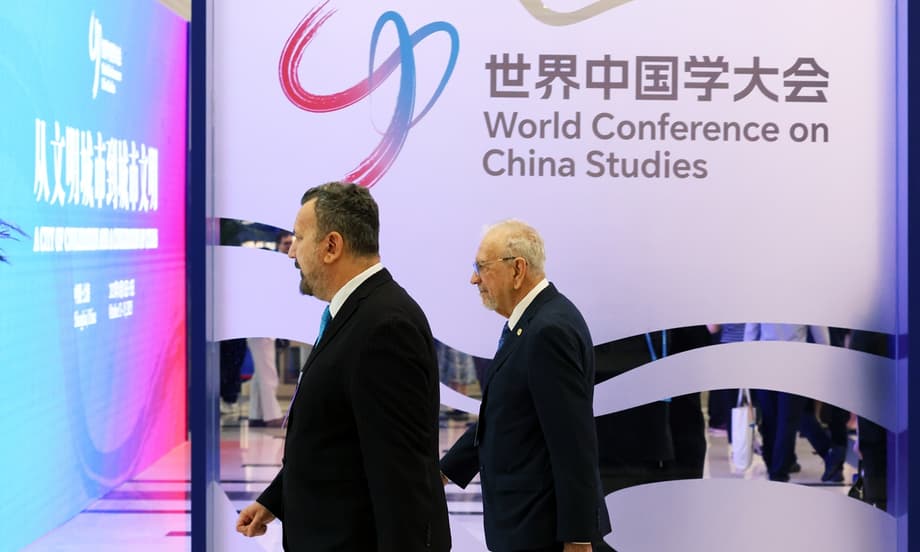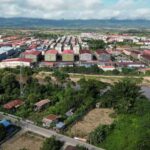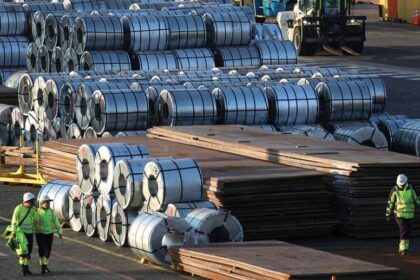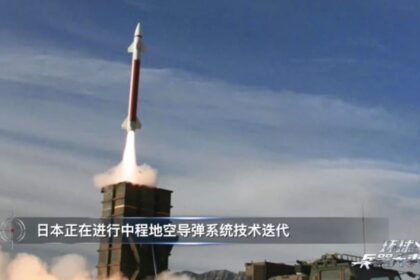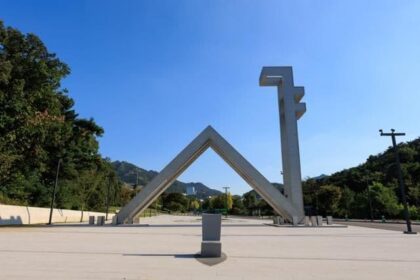Setting the stage: why the Shanghai gathering matters
In mid October 2025, Shanghai opened its doors to around 500 scholars, policy figures, and cultural experts from more than 60 countries for the second World Conference on China Studies. The theme, Historical and Contemporary China: A Global Perspective, signals a broad ambition. Organizers set out to connect the study of China’s long history with the fast moving realities of a modern economy, a major power, and a society that continues to change. The scale of the event and the diversity of the participants point to a practical fact. Interest in how China works is growing as the world becomes more multipolar and as single models for development face sharper scrutiny.
- Setting the stage: why the Shanghai gathering matters
- What the conference set out to do
- Key voices and ideas on stage
- Sinology, China studies, and a contested shift
- What scholars are studying this year
- Shanghai as a living laboratory
- What the Global South is watching
- What was announced in Shanghai
- How critics view the event
- What to watch after the conference
- Key Points
Hosted by the State Council Information Office and the Shanghai municipal government, the three day program mixes a main forum, parallel sub forums, guided visits, and an exhibition on urban civilization. Sessions revolve around continuity and innovation in Chinese civilization, the theory and practice of modernization, digital age research tools, and the field’s future. The meeting also launched a Shanghai initiative for global mutual learning and the advancement of China studies, a pledge to expand exchange, improve access to sources, and connect historical scholarship with present day questions across borders.
Who is in the room
Attendees include leading academics of history, sociology, economics, politics, and culture from China and abroad, as well as former heads of government, think tank researchers, and young scholars. The format encourages cross discipline panels and comparison of approaches, from textual studies of classics to field research on cities and villages. The result is a conversation that treats China as both a very old civilization and a living system that can be studied with the same clarity as any modern society.
What the conference set out to do
The organizers present China studies as a bridge that links the past and the present. They argue that understanding the roots of culture, statecraft, and social life can help explain contemporary policy choices, growth patterns, and public attitudes. A practical emphasis runs through the agenda. Panels examine Chinese style modernization, local governance, social policy, technology ecosystems, and how all of that relates to global debates on development.
- Continuity and innovation of Chinese civilization across eras
- Modernization with Chinese characteristics and its outcomes
- Multidisciplinary methods that merge history, social science, and policy studies
- Global China studies in the digital age, from data access to translation
- The training, networks, and future development of the field
The program tries to move discussion away from slogans and toward comparative questions. How do different regions sequence infrastructure, education, and industrial policy. Which parts of China are leading in green industry or social service reform, and why. Where does historical culture shape citizen expectations in ways that matter for present day governance. Those are the kinds of questions that recur in the sub forums.
Key voices and ideas on stage
Several speakers set the tone for the debate by calling for deeper research that places China in a global conversation. Gao Xiang, president of the Chinese Academy of Social Sciences, urged comparative work that looks beyond a single country frame and treats modernization as a shared human project.
Gao said the task is to document progress and to connect it with questions that concern researchers in many countries.
“Comparative studies could reveal the global significance of China’s development, offering insights into answering the profound question of ‘Where is humanity headed?’ posed by the world, the times, and history,” he said.
Romano Prodi, former prime minister of Italy and former president of the European Commission, focused on relations between Europe and China. He described long term cooperation as the anchor of that relationship and argued that practical engagement and confidence building can exist together.
“Strategic cooperation remains the cornerstone of China Europe relations,” Prodi said. “A dynamic balance between pragmatism and strategic trust is essential for overcoming differences and building a stable and prosperous future.”
Jan Oberg, founder of a peace research foundation in Sweden, framed the meeting as a chance to build trust through direct conversation and dialogue across borders.
Senior Chinese officials also used the venue to present a vision that stresses cultural confidence and storytelling aimed at international audiences. Li Shulei, head of the Publicity Department of the Communist Party of China, delivered a keynote that promoted mutual learning among civilizations and encouraged scholars to deepen research on the country’s modernization path and to tell China’s story well. Speakers linked the discussion to the Global Civilization Initiative (GCI), a call from Beijing for equal dialogue among cultures.
Several international participants made practical suggestions. Martin Jacques stressed that understanding China requires attention to its own history and context, not imported templates. Thomas Gold, professor emeritus of sociology at the University of California, Berkeley, encouraged more field research in China and more engagement with people from different walks of life, from factory managers to delivery workers.
Sinology, China studies, and a contested shift
The event sits at the junction of two academic traditions. Sinology grew from philology and history, with close reading of classical texts and intensive language study at its core. China studies is a wider umbrella that includes contemporary politics, economics, sociology, and cultural analysis. Both have value. The current push inside China favors the broader frame, on the grounds that it can connect past and present and speak to global policy debates.
Critics raise concerns about message control and political pressure in the newer framing. They argue that a strong emphasis on telling a national story risks crowding out topics that are harder to discuss in public settings, such as censorship, minority rights, or research access. They also warn that foreign scholars might trade critical distance for greater access if funding or visibility depends on supportive narratives. Many academics who engage with China say the answer is to keep working standards high, to insist on open archives and transparent data, and to protect space for genuine debate while still participating in dialogue.
What scholars are studying this year
Sub forums this year range from rural governance and poverty reduction to digital platforms and cultural heritage protection. Several panels look at Chinese style modernization through specific lenses. Examples include industrial policy in advanced manufacturing, the evolution from extensive growth to high quality growth, shifts in social safety nets, and the role of universities in regional development. Others probe how ancient concepts of statecraft and virtue still shape public expectations and political language.
A recurring theme is method. Researchers describe how machine translation, large linguistic corpora, and digital archives are making it easier to read sources across time periods and to test claims with data. Sessions on digital intelligence in China studies focus on standards for data collection, privacy, and reproducibility. Organizers also released a recommended bibliography for the field, a sign that access to original Chinese texts and curated reference works is improving for students and early career scholars.
Shanghai as a living laboratory
Shanghai serves as a case study that ties theory to real life. Foreign guests toured neighborhoods, industrial parks, museums, and heritage sites to examine how the city manages traffic, waste, public space, and culture. Many visitors remarked on the speed of change over the past decade. Some highlighted visible gains in green space, cleaner streets, and riverfront renewal. The program also showcased advances in intelligent manufacturing, including demonstrations of humanoid robots and factory automation. Those displays offer a glimpse into how local industry is trying to climb the value chain.
Participants who have returned to China after several years away spoke of a city that looks more livable. A visiting professor from Greece praised the humanistic spirit he sees in community programs and pointed to stronger environmental protection efforts in the metropolis. The Shanghai mayor announced a city led initiative to support global mutual learning in China studies, underscoring a local commitment to keep such exchanges going.
What the Global South is watching
Scholars from Africa, Latin America, South Asia, and the Middle East arrived with concrete questions. Many want to know how China financed infrastructure at scale, how local governments experimented and learned, and how poverty relief programs were organized. Others are focused on cultural policy and the balance between tradition and modernization. A repeated point in the discussions is that development can take different paths. Guests from countries with young populations are interested in lessons on skills training, special economic zones, and the integration of small firms into large supply chains.
Technology and service delivery are a draw as well. Researchers look at digital payments, e commerce logistics, city level data systems, and community health services to see which parts might travel across borders. The Chinese concept of common prosperity, still evolving, comes up in sessions that test whether social policy goals can keep pace with growth in the private sector. For many attendees, Shanghai acts as a field site where they can ask hard questions and compare experiences without relying on second hand narratives.
What was announced in Shanghai
The opening ceremony included a new Shanghai initiative for global mutual learning and advancement of China studies. It is framed as a platform that links universities, think tanks, publishers, and city institutions. The aim is to expand scholar exchanges, promote co translation projects, improve access to archives and datasets, and support joint research that connects classical knowledge with contemporary issues. City leaders say the initiative will be open to partners from many countries and will prioritize young researchers.
Reference tools and resources
Organizers also presented a recommended bibliography to guide students and general readers who want to build a foundation in the field. Exhibits included new editions of classics, modern social science works on China, and digital gateways to archives and statistical resources. The conference venue housed an exhibition on urban civilization that showed cases from Shanghai’s neighborhoods and from cities in other provinces, a reminder that much of the China studies debate now happens at the intersection of history and urban life.
How critics view the event
Outside voices who watch China related exchanges argue that the conference is part of a wider push to increase influence over how foreign audiences perceive the country. They see a shift from the language of independent sinology toward a state framed field of China studies that encourages alignment with official narratives. Some point to the phrase telling China’s story well, widely used in policy communication, as evidence that the priority is image building. They worry that sensitive topics are avoided on stage and that the field could narrow if public funding favors supportive work.
Participants who take part often respond that engagement is valuable on its own terms. They argue that the ability to do fieldwork, read sources, and exchange notes with counterparts in China is strengthened by showing up. They add that rigorous methods, transparent referencing, and careful comparison can protect scholarly independence. The tension between access and autonomy remains, yet many researchers say the best way to build understanding is to keep the conversation going while holding firm to academic standards.
What to watch after the conference
The meeting runs across three days in mid October and then hands off to partner institutions that will lead follow up research, exchanges, and publications. The Shanghai initiative will be worth watching for concrete steps. Signs of progress would include more open access to data, easier visas for visiting scholars, long term joint projects, and support for translation of both classical and contemporary texts. The release of a recommended bibliography signals a desire to lower barriers to entry for students who are new to the field.
Another marker is the breadth of topics supported in coming months. If panels and publications remain limited to safe themes, critics will claim that the field is narrowing. If new work tackles diverse subjects, from labor policy to environmental enforcement and minority cultures, the case for a broad and robust China studies community will be stronger. Many participants say that Europe and China can find practical ways to work together while managing differences, a view that aligns with the call for strategic cooperation voiced during the opening.
Key Points
- The second World Conference on China Studies opened in Shanghai in mid October 2025 with about 500 participants from more than 60 countries
- The theme is Historical and Contemporary China: A Global Perspective
- The event is co hosted by the State Council Information Office and the Shanghai municipal government
- Gao Xiang urged comparative research to explain the global meaning of China’s modernization
- Romano Prodi called for strategic cooperation and a balance of pragmatism and trust in Europe China relations
- The conference launched a Shanghai initiative for global mutual learning and the advancement of China studies
- Sessions focus on modernization, continuity of civilization, digital tools for research, and the future of the field
- Exhibitions highlighted urban governance and intelligent manufacturing, including demonstrations of humanoid robots
- Scholars from the Global South are examining lessons in infrastructure, poverty reduction, and cultural policy
- Supporters see the meeting as a forum for exchange, while critics warn about political influence and message control


